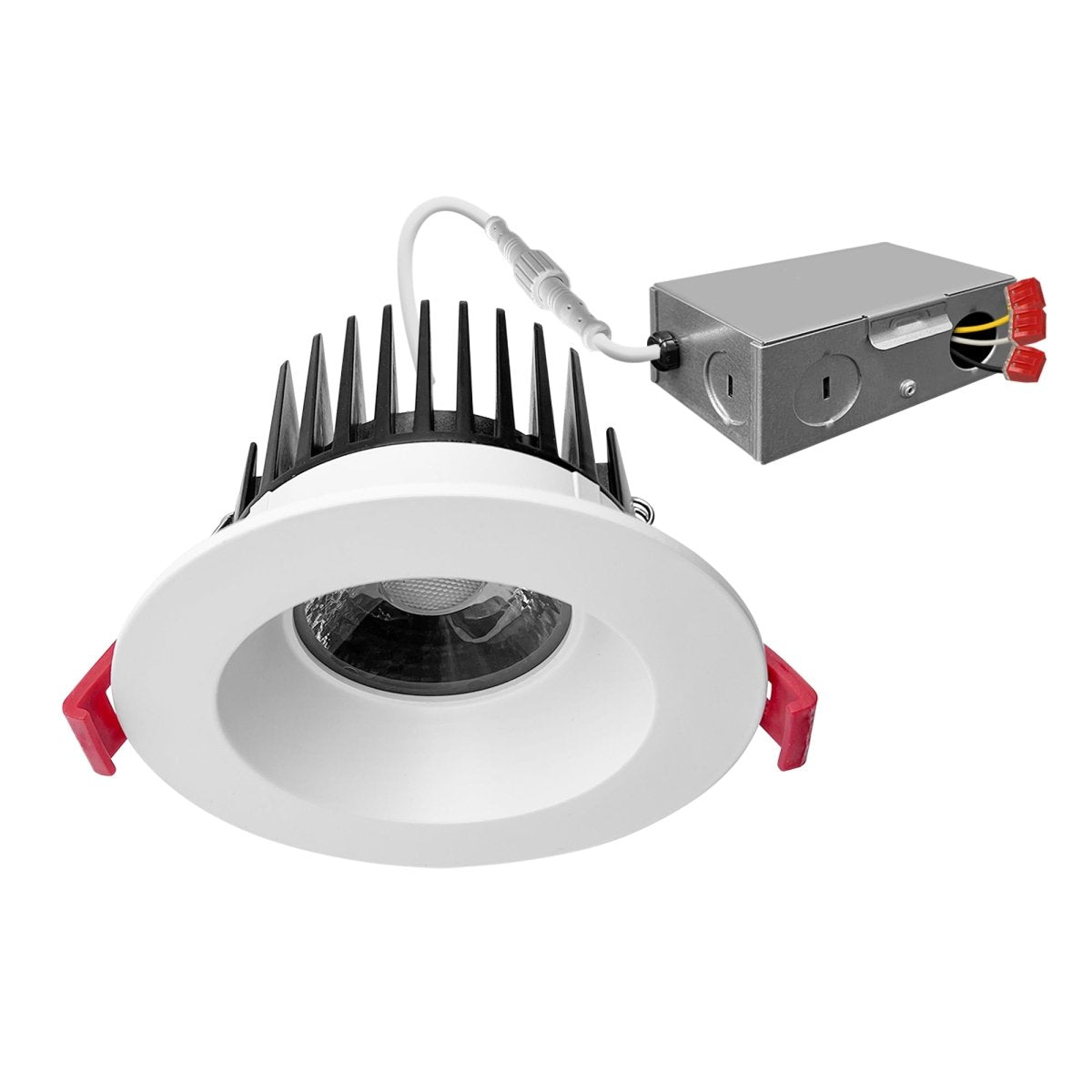How LED Lighting Makes US More (or Less) Productive
Lighting does more than illuminate—it shapes our mood and energy levels. For thousands of years, humans rose with the sun and rested when it set. In contrast, artificial lighting is a relatively recent innovation, yet our bodies still respond strongly to its qualities. You may already know that cooler light tends to stimulate alertness, while warmer light fosters relaxation. Light color temperature is still one of several factors that determine how well we work. In this article we will explore some other influences on our workplace productivity, and what can be done to make us work better while feeling better.
1. Color Temperature (CCT): Still Foundational
Cool white light (5000K–6500K) is great for boosting concentration and mental sharpness, making it ideal for task-heavy environments. Warm light (2700K–3500K), on the other hand, creates a more relaxing atmosphere—better suited to lounges or break rooms.
For full-day productivity, tunable white systems gradually shift from cool light in the morning to slightly warmer tones in the afternoon to sustain both alertness and visual comfort
2. Brightness and Workspace Illuminance
One of the most common lighting mistakes in office environments is assuming that "bright enough" equals productivity. In fact, there is a narrow range of brightness that makes us function at our best. Insufficient light in a work area can lead to fatigue, sluggish thinking, and more errors. Overly bright lighting leads to glare and discomfort, which also hampers productivity. The most productive lighting levels balance brightness to make sure we have enough to function well without washing everything out in glare.
Lighting fixtures give their brightness in lumens, but brightness at the source is not equal to brightness in a space. A light mounted 20 feet above the workstation does not provide the same illumination as one that is 10 feet above That’s where lux comes in. Lux measures light intensity in a given area like a desk. Most general purpose office lighting should be 300-500 lux, and workspaces requiring attention to fine detail need around double that level (you can get lux by diving lumens by 4 × π × Distance²).
3. Glare and Flickering, the Subtle Productivity Killers
Some of the biggest threats to focus and comfort in a workspace are invisible but powerful visual stressors like glare and flicker. These don’t always register consciously, but still chip away at our concentration and efficiency over the course of the day.
Glare occurs when light hits your eyes directly or reflects off surfaces like monitors or glossy desks. It causes squinting, eye strain, and even headaches. One of the most effective ways to reduce glare is using baffle-trim downlights, which have grooved inner walls that absorb stray light and soften the beam. These fixtures direct light more precisely and reduce harsh edge reflections, especially useful for functions requiring a lot of computer work.
Flicker, meanwhile, is often an invisible but no less damaging threat to productivity. Flickering lighting is caused by drivers that don’t properly smooth out fluctuations in electrical current. These cheaper drivers allow the light output to subtly rise and fall hundreds of times per second, creating micro-pulses of brightness that your eyes and brain must constantly adjust to. Prolonged exposure to flickering can contribute to headaches, eye strain, and reduced focus, and the effects are typically stronger in those with higher visual sensitivity like migraine sufferers or neurodivergent individuals.
For optimal productivity, the lighting environment should minimize glare and flickering, reducing distraction and visual stress without drawing attention to itself.

NuWatt Anti-Glare Recessed Downlight – 5CCT, 90 CRI
$29.99
Selectable CCT, flicker-free, and anti-glare baffle trim for workplace performance.
View Product5. Color Accuracy (CRI): Seeing Clearly Without Strain
CRI (Color Rendering Index) measures how faithfully a light source shows true colors. A CRI of 80 is acceptable for general use, but lower color accuracy forces your eyes to work harder to interpret contrast, color differences, or fine detail. In offices, this can result in eye fatigue and slower task completion. High-CRI lighting (90+) reduces visual strain, improves perception speed, and increases confidence in what you see, whether it’s product finishes, printed text, or skin tones.
6. Lighting Uniformity: Consistent Light for Consistent Work
Uneven lighting—bright spots in some places, shadows in others—forces the eyes to constantly adjust, increasing fatigue and breaking focus. Quality LED fixtures eliminate these distractions through even light distribution and no hotspots.
Look for panel lights or diffused luminaires with uniform coverage. A well-lit space shouldn’t have noticeable bright zones or visible LEDs.
7. Personalized Lighting Control
Allowing people to adjust lighting—whether dimming brightness or shifting color temperature—has a direct impact on productivity. Primary lighting fixtures can be augmented with preset smart zoning with modes like “focus,” “presentation,” or “collaboration,” enabling flexibility without full personalization.
These modes adjust brightness and CCT to match the task: bright, cool light for heads-down work; moderate neutral light for meetings; warm, low light for presentations. This layered approach balances communal lighting with individual comfort, minimizing distractions and supporting sustained focus.
8. Circadian-Friendly Lighting Supports Focus
Circadian lighting systems use LEDs that shift CCT and intensity to mimic natural daylight. These systems help regulate alertness, mood, and cognitive function throughout the day.
In windowless or consistently lit environments, circadian lighting helps reduce mid-afternoon slumps and sustain mental energy by simulating natural light cycles, making workspaces more productive and health-supportive over time.
Hack Productivity With Lighting
In the modern workplace, lighting is no less important than ergonomic chairs, quality monitors, or reliable internet. It directly affects how we feel, focus, and perform. The right LED setup can reduce fatigue, sharpen attention, and support consistent productivity throughout the day. Factors like color temperature, glare reduction, flicker control, and color accuracy all contribute to visual comfort and cognitive efficiency.
If you're designing or upgrading a workspace, consider lighting not just as a utility, but as a performance investment. The right lighting helps people do their best work—clearly, comfortably, and without distraction.

